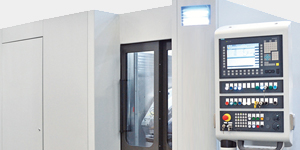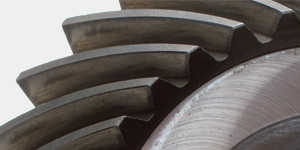History of Bending Fatigue Part V
In this succession of papers, we have looked at the history, failure life models, and the impending factors that contribute to bending fatigue. The...
History of Bending Fatigue, Part IV
The influence of frequency for monotonic or reversing load applications should not be underestimated. Natural frequencies must clearly be avoided. In single tooth fatigue...
History of Bending Fatigue, Part III
In rotating machinery, bending and contact fatigue life is a principle concern in design life. In all wrought and powder metal gearing and mechanical...
History of Bending Fatigue, Part II
Safety factors cannot replace appropriate evaluation of impending dynamics in fatigue design. Determining the design life model is where the process must begin. Using...
History of Bending Fatigue, Part I
Bending fatigue life is a principle concern in all wrought and powder metal gearing and all mechanical power transmission components. It is also a...
The Factor of Safety as a Statistical Design Variable
Classic Factors of safety – sometimes called service factors
According to NEMA, a Motor Service Factor (SF) is the percentage of overload the motor can...
Using Master Gears
In the design of generated and molded gears, it is common to specify a total composite error (TCE) tolerance for in-process inspection, especially for...
Molded Plastic Gears
A designer never wants to mold a standard “generated” gear design. Why? Because the molding process gives us several opportunities to optimize the gear...
The Casting Process for Gears, Part III
THE FORMATION OF THE GRAPHITE
Control of the physical properties of a cast iron is normally aimed at exercising some degree of control of the...
Powder Metal Parts Finishing
This month we will focus on a very important PM finishing process – The steam treating of powder metal parts.
There are several benefits to...
Manufacturing DIN 5481 Type Spline Serrations
This month, we will focus on calculating and sizing DIN 5481 type spline serrations for any application. The latest document is a 2009 update...
The Advantages of Net Shape Gears
In this column, every month we are going to explore some very interesting aspects of net shape gears. But first, what are net shape...
The Casting Process for Gears, Part II
White Iron will Normally Contract at 1/4” per Foot.
Contraction is not always equi-dimensional, in that it is influenced by mass and configuration. Contraction is...
The Casting Process for Gears, Part I
The advantages of using castings for engineering components such as gears are well appreciated by design engineers. Of major importance is the fact that...
Closed Die Forging
Forging is the process of forming and shaping metals through the use of localized compressive forces. Forgings are worked above their recrystallization temperature and...
Gear Rating vs. Percent Lower Transformation Products in Steel Gears
Some gear rating specifications, such as the popular the AGMA 2001, require a minimum percentage of lower transformation products (martensite, lower bainite)1 to a...
Nondestructive Testing and What Certification Fits Your Gear Production Needs
Nondestructive testing (NDT) is a fascinating and ever evolving field prevalent within the gear industry. It is because of this evolution that a need...
Grain Size Requirements
For gear material supplied in the intermediate heat treat condition, the capability grain size would be appropriate. The goal is to show (usually on...
Considering As-Heat Treated Grain Size
When reviewing and working to customer steel specifications, it seems to me that one of the most misused and misunderstood gear material requirements is...
Dealing with ‘Ghost Signals’
During my time in the nondestructive testing field, I have experienced one anomaly continually arise while performing specific ultrasonic examinations of forgings. I’m speaking...






























